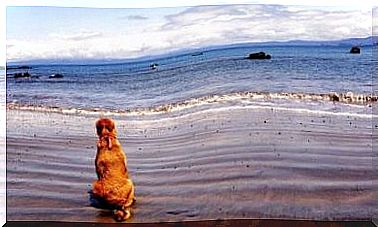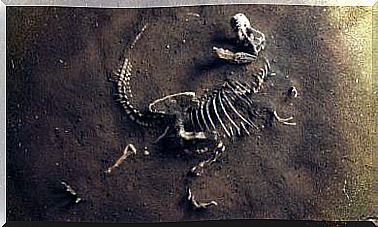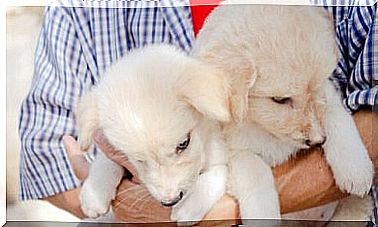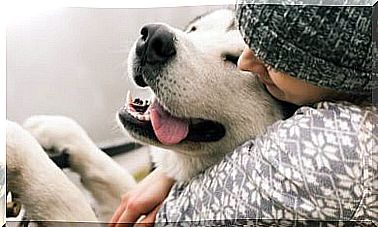Animals In Floods: What To Do?
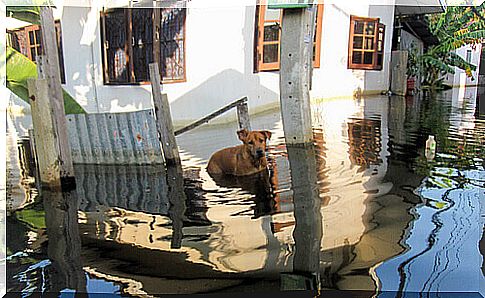
A natural disaster like this can lead to serious material consequences. However, we must not forget to take into account that anxiety or stress also happens to animals in floods. We must pay attention to your well-being even in the most difficult times.
When natural disasters hit a home, they affect the entire family equally. This includes people and pets. Therefore, taking care of animals in floods or other similar situations is important.
In the moments before a natural disaster, pets often get restless. It can be said that this is their way of predicting and preventing what will happen. It’s almost like a kind of sixth sense.
When you are aware of the arrival of a natural disaster, there are ways to take care of pets. The same happens at the time of emergency. In the case of animals in floods, having a safe place and providing shelter is vital to minimize the animal’s anxiety.
How to take care of animals in floods?
Floods occur when excess water exceeds the spaces inhabitable by humans or animals. Some external causes can cause flooding, such as the destruction of dams or broken pipes, which are very common in homes.
They can occur due to natural events such as torrential rains, melting ice or overflowing rivers etc. Floods are also the result of high tides or tidal waves.

When it comes to natural disasters, meteorological centers in cities often predict such catastrophes. The moment that happens, it’s time to take preventive action as soon as possible.
Always pay attention to the news and take civil defense recommendations into account. It is also necessary to have the list of shelters and emergency numbers handy.
What to do before a flood?
- Take preventive measures. Before announcing possible floods, it is important to establish communication with the civil defense and with the trusted veterinarian.
- Evaluate the possibility of an evacuation. In the event of a major disaster, it is important to know which animal shelters are and where they are located. They are equipped with the necessary devices to help a pet in an emergency. In addition, they have specialized staff.
- Keep your pet’s vaccinations up to date.
- Prepare an emergency kit. This should include the food portions needed to feed you for a week, as well as medications and blankets. In addition, it must contain animal identifications such as photos, documents and auxiliary plates. It is also helpful to include a list of shelters where animals are accepted.
- Check the pet’s collar, where the nameplate should contain the owner’s contact details: phone number, address, as well as the pet’s name.
What to do with a pet in floods?
First, stay calm and, in the event of an evacuation, it is advisable for the animal to be tethered. Animals are often nervous about water and instinctively try to escape. Having them tied up makes it easier to immobilize them.
When it comes to small animals such as rabbits or hamsters, it is advisable to keep them in their cages. That way they won’t get nervous or run away.
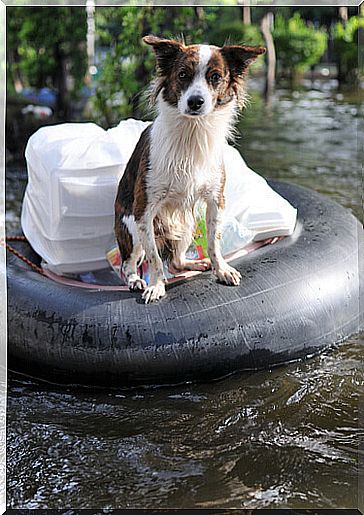
If the pet has difficulty walking, it should be carried to a safe place. Generally, attics or roofs are the areas recommended by flood and emergency specialists.
Once safe, it ‘s important to try to calm the animal down during floods: petting, feeding and speaking gently helps to reduce the fear the animal feels at that time.
What to do after a flood?
Immediately after a flood, the family group must remain united and, logically, wait for emergency help, who are qualified professionals for these situations.
The animal must be prevented from drinking stagnant water or consuming spoiled food. You also need to be careful not to go near electrical outlets or power sources.
After the experience has passed, the main thing is to take the animal for a veterinary evaluation. The specialist can assess his physical and emotional condition after the event he experienced.
It should be noted that some animals end up suffering from shock or post-traumatic stress. The effects of this condition can be lack of appetite and sleep disturbance, difficulty in controlling sphincters and problems with socializing.
Finally, getting back into the routine after a natural disaster will help the whole family get through the experience. As far as possible, daily activities should be normalized as quickly as possible.
In certain cases, experts recommend medications to control the effects of post-traumatic stress. Our trusted veterinarian will be the person to help your pet recover from a difficult situation.

